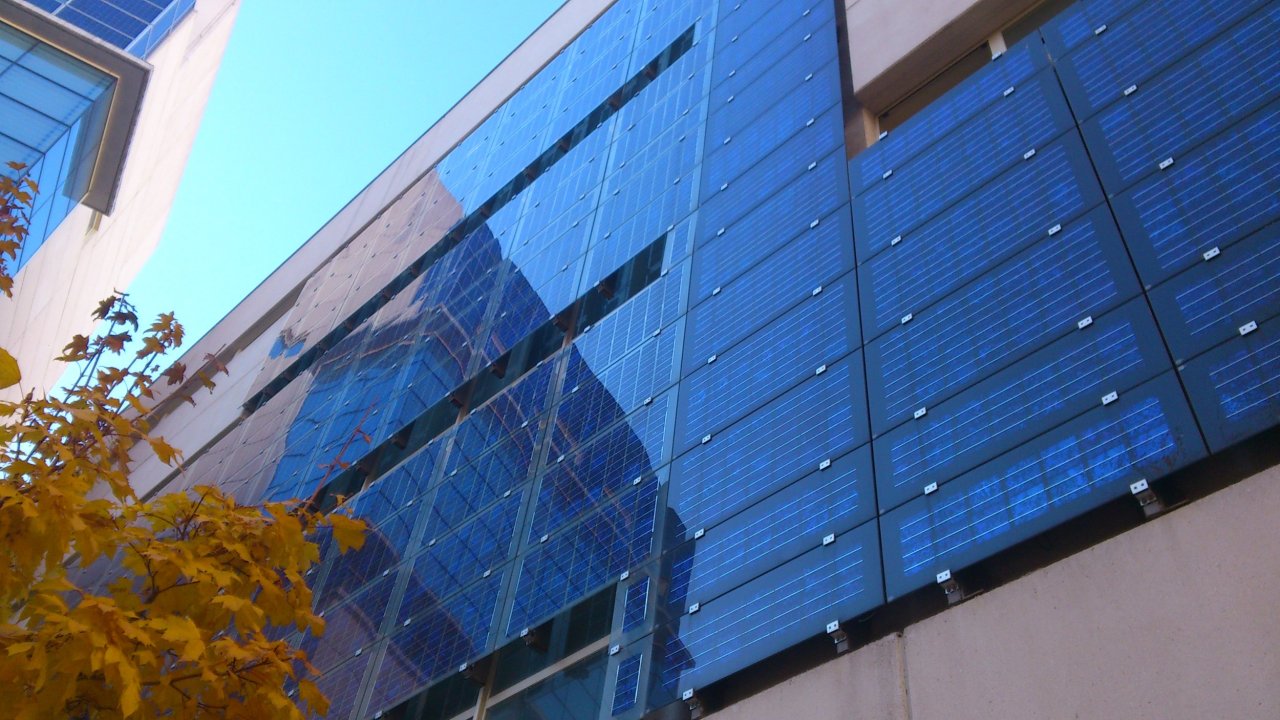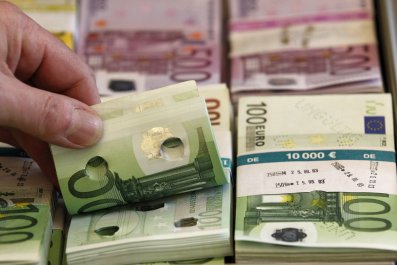Every hour, the sun rains enough energy on our tiny planet to satisfy our needs around the globe for a year. It's a fact that's a source of both inspiration and frustration: there's plenty of power for all our cars, phones, washing machines and whatever else, but right now much of it's slipping through our fingers. About 30% of it is simply reflected back into space.
While some countries have made huge strides in generating power using photovoltaic cells in recent years – Germany met more than half its electricity demand using them for the first time in June – it's a technology that still has its drawbacks. Chief among them is that there's only so many places we would want to put black panels. But engineers at Michigan State University (MSU) in the US have come up with a solution – make the technology completely transparent.
MSU's transparent "solar concentrator", described in a new report in the journal Advanced Optical Materials, could become the windows in our homes and offices, the screens on our smartphones and laptops and even placed over billboards so they would generate power.
In traditional photovoltaic cells, the whole surface converts the sun's rays into electricity. But in the solar concentrator, the majority of the surface simply soaks up the sun's energy before it's transported to the edge of the unit where thin strips of standard solar cell convert the energy to electricity.
Crucially the molecules that capture the energy are invisible. "The molecules we use aren't too dissimilar to ones found in nature," says Richard Lunt, an assistant professor of chemical engineering and materials science at MSU.
"We tailor their properties to absorb in parts of the solar spectrum that the human eye can't see – ultraviolet and near infrared. We also design them to emit that energy as a glow at another wavelength in the infrared. Again we can't see that light." It's that emitted energy that's converted to electricity.
The idea of a solar concentrator isn't new. In the 1970s, concentrators were developed that were coated or embedded with dyes to capture the sun's energy. But as these absorbed and then emitted light in the visible part of the spectrum, they weren't completely transparent.
The best of the coloured solar concentrators convert about 7% of the sun's energy to electricity and MSU's concentrator has an efficiency close to 1%, whereas the best of the silicon photovoltaic cells achieve 22-25% efficiencies. That said, MSU's material is completely transparent and Lunt and his team are already working on the next generation of light-absorbing molecules. "We're excited about this," he says. "Right now, we only harvest a certain fraction of the infrared spectrum and we'll expand on that. We can also increase the efficiency of the glowing process." When optimised, Lunt's team aims to reach efficiencies of above 5%.
"I grew up outside Boston," says Lunt. "When you walk around a big city and see all the glass there is, it's really inspiring to think you could use all the surfaces to harvest solar energy."
While working at MIT, Lunt set up a spin-off company, Ubiquitous Energy, with fellow engineers to commercialise transparent solar power tech. Rather than glazing skyscrapers, the first applications are likely to be in smartphones and tablets. "I'd certainly like to see it in mobile electronics within the next five years," says Lunt.
"The thing I like about the name Ubiquitous Energy, is that it describes what we are trying to do," he says. "We really want to develop this technology so it can be deployed around us without us knowing it's there." Greenhouses, panelling on buildings and car windscreens could even be made from transparent solar concentrators.
"If you need completely clear glass – and this stuff really is entirely transparent – then it could be useful," says Henry Snaith, a professor in the physics department at the University of Oxford. Snaith has taken a different approach to making photovoltaic cells inconspicuous.
In his system, the whole of the surface is the photovoltaic cell – it's not a concentrator. Snaith has found a way to process perovskites, an alternative to silicon that's billed as the next big thing in solar cell tech, so they form crystals with lots of holes in them. "The holes are small enough that you can't see them with your eye but they're large enough that they let light pass straight through," says Snaith.
His perovskite photovoltaic cell looks like grey tinted glass. "You generate power from the light it absorbs and the stuff it doesn't absorb goes through into the room," says Snaith. The fact that it's not completely transparent doesn't present a problem, he says. "Imagine glass tower blocks, even in London, if you made them all of clear glass they would be greenhouses and that wouldn't be very pleasant."
Snaith and his colleagues are currently achieving close to 20% efficiency – harnessing one fifth of the sun's incoming energy – with their perovskite cells in the lab. (The current world-record-holding photovoltaic cell is made from another material, gallium arsenide, by Alta Devices in California, and has achieved a 29% efficiency).
Oxford Photovoltaics, the company Snaith founded with two entrepreneurs, hopes to have the first transparent perovskite units installed in buildings in London in 2017. Discussions are currently being held with architects and construction companies.
"I'm entirely biased," says Snaith. "I think we'll always produce power in a lot of different ways, but I think photovoltaics will be the primary source of power in the future and most of the things we run will be electric. Already in 2014, it's costing the same to produce electricity from photovoltaics in some locations as it costs to build coal-fired power plants and generate electricity from mined coal.
"The cost of electricity from photovoltaic technology is going to keep coming down, so in two or more years, it will be half the price again and so on and so forth. Very soon, within five to 10 years, everywhere in the world the cheapest form of electricity will be photovoltaics."




























